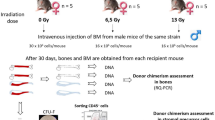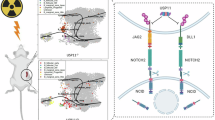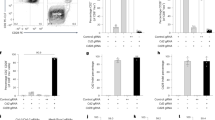Abstract
THE secondary disease observed in irradiated animals treated with foreign bone marrow is of general interest and importance. The basic question which remains unanswered is whether immunologically competent cells in the chimera originate from the donor, the host, or a combination of both. Erythrocyte life-span studies might be expected to throw light on whether this secondary reaction, in so far as it is reflected in red cell survival, is of host or of donor origin.
This is a preview of subscription content, access via your institution
Access options
Subscribe to this journal
Receive 51 print issues and online access
$199.00 per year
only $3.90 per issue
Buy this article
- Purchase on SpringerLink
- Instant access to full article PDF
Prices may be subject to local taxes which are calculated during checkout
Similar content being viewed by others
References
St. Amand, W., and Smith, L. H., J. App. Physiol., 14, 445 (1959).
Smith, L. H., and Tohá, J., Proc. Soc. Exp. Biol. and Med., 98, 125 (1958).
Gengozian, N., Makinodan, T., Congdon, C. C., and Owen, R. D., Proc. U.S. Nat. Acad. Sci., 44, 560 (1958).
Author information
Authors and Affiliations
Rights and permissions
About this article
Cite this article
GOODMAN, J., SMITH, L. Life-Span of Rat and Mouse Erythrocytes in the Rat–Mouse Chimera. Nature 183, 1833 (1959). https://doi.org/10.1038/1831833a0
Issue date:
DOI: https://doi.org/10.1038/1831833a0



